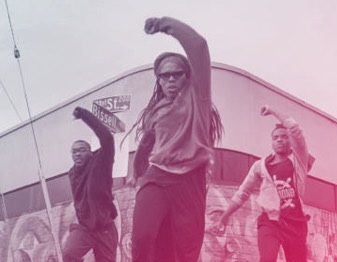Last Friday, amongst brown paper boxes and piles of tissue paper, I helped San Francisco’s The Thing Quarterly celebrate its one year anniversary by wrapping Issue 5, the first issue of their second subscription cycle.
So far it’s been one success after another for The Thing, starting with a residency at Southern Exposure and a profile in Frieze magazine. Over the course of the last year, the periodical has been able to fully cover production costs via subscription sales, provide comparatively decent compensation to its contributors, and garner positive press from a diversity of publications, including The San Francisco Chronicle, Marie Claire, NPR’s Marketplace and Design Observer. Given the difficulties inherent in independent publishing, all of this left yours truly very curious as to what magic formula they happened to be following.
First and foremost, it’s obvious that The Thing offers a unique product. Its founders and editors, John Herschend and Will Rogan, invite four guest artists a year to design an issue, which takes the form of an everyday object — coaster, baseball hat, doorstop — that somehow incorporates text. Issue One, for example, featured a vinyl window shade designed by the artist Miranda July with the text “If this shade is down I’m not who you think I am” screenprinted in July’s recognizable black handwriting.
This is definitely part of the formula: The Thing offers collectibility. Even though Herschend and Rogan don’t consider the issues to be limited editions, once an issue is sold out, anyone interested in acquiring old stock is at the mercy of eBay and the cultural capital market. Buying at the current subscription rate ($35 a thing) is an incredibly good deal, considering the quality of the artists and writers involved. The current subscription cycle, for example, includes Lucy Pullen, Trevor Paglen, Jonathan Lethem, and the collaborative Allora & Calzadilla, as well as a few surprise projects.
Beyond the collectibility of the contributors, however, The Thing rolls into one all of the trends that I see flourishing in independent publishing right now: good design, specialty-packaging, and quality craftsmanship. In other words, the most successful offline publishing projects over the last decade have paid as much attention to their own object-hood as they have their content (San Francisco’s McSweeney’s being a prime example, as well as magazines like Cabinet, which is offset-printed in Belgium at a shop that still feeds its sheets by hand).


